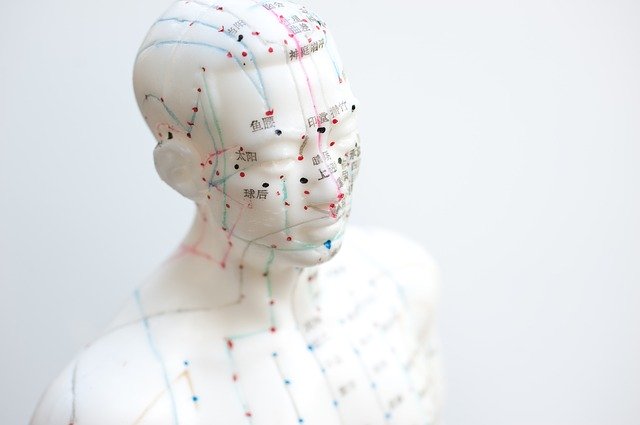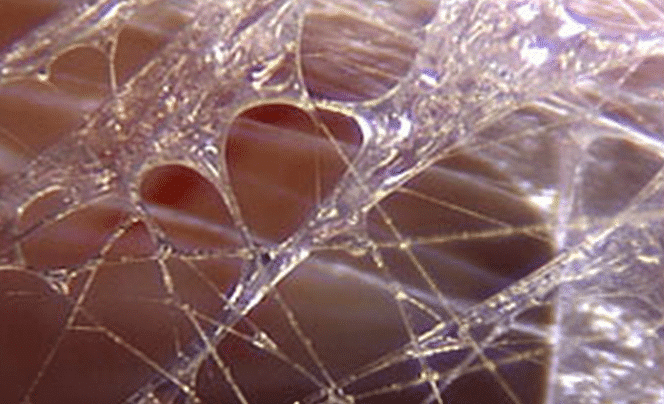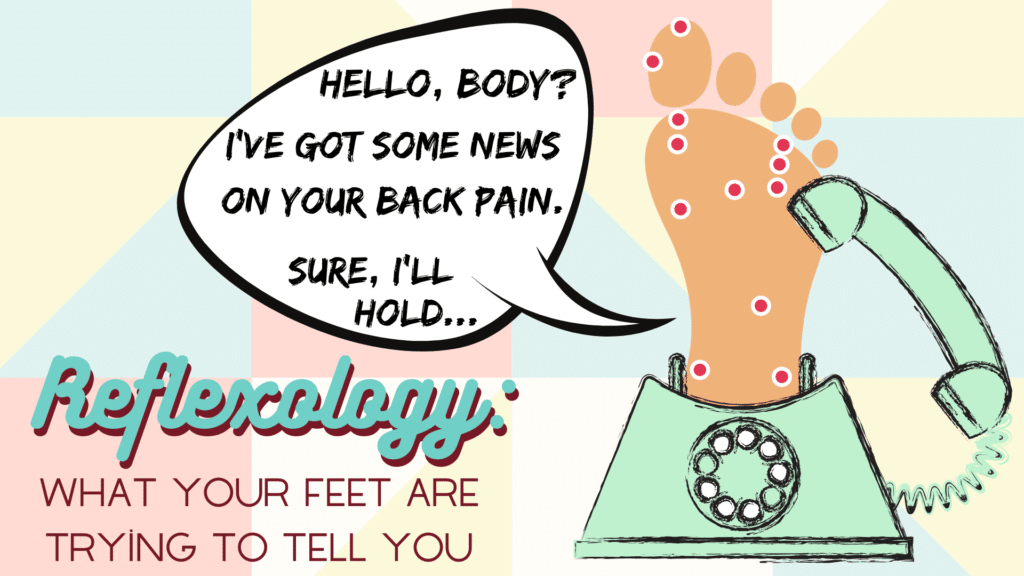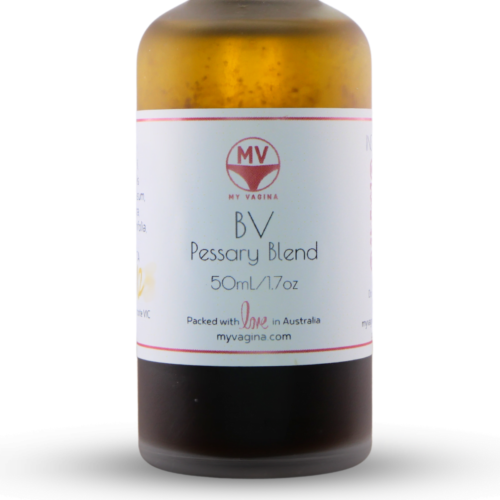To understand reflexology, we will draw on research and views from those studying acupuncture. Acupuncture and reflexology utilise the same systems and methods to achieve their goals.
Acupuncture uses needles to get further into pressure points, while reflexology, also known as acupressure, uses the pressure we can exert with our own hands (or a smooth, rounded stick if your thumbs are suffering).
One mechanism for how acupressure works is (maybe) via fascia, the network of fibres that holds us together, understood using the Chinse meridian system. This explanation is pretty basic, since it’s almost certainly true that there is more to it than this, but alas, we like an explanation – so here goes.
What is the Chinese meridian system?
The Chinese meridian system and its anatomical basis remain ‘unresolved’ in the eyes of Western medicine/science. There is no doubt the Chinese are onto something, but just how it works has remained elusive.
Reflexology is the simplistic cousin of acupuncture. It runs off the 10 zones of the body, running up each toe the length of our body, including our head. It does not cross over at the neck like our nerves do (which makes it interesting and supports the fascia theory).
Acupressure points are mapped out across the whole body. As you can see by the map of just the head below, a lot of trouble has gone into it. We won’t get into acupuncture in any depth, as it doesn’t matter, so long as you understand the basic premise of the meridian system – a network of pressure points that are connected along ‘fault lines’ that run up the body, head to toe (not always in a straight line).

What is fascia?
First, we need to understand what fascia is, and then look at the way in which acupressure may function within it.
Fascia is the reason we don’t slop out of our bodies. You think skin is enough? A spine? Muscles? Fascia is your best friend.
Fascia is a 3D web of collagen (and water) structures that hold us together. When you give your cousin a wrist burn (twisting the skin on the wrist opposite directions to make the wrist skin burn and go red), you are stretching the fascia.
This stuff is really amazing. This is a magnified image of fascia.

Fascia is described as a band or sheet of connective tissue, in this case mostly collagen and water, that surrounds every part of us, but as you can see by the image above, fascia is a web – not a sheet. Fascia stabilises, attaches, encloses and separates body parts like muscles, organs and other tissue. It’s everywhere.
This video is a live magnification of fascia. It’s difficult, after watching the video of fascia in the flesh, to imagine it being a lifeless sheath.
There is evidence to support the concept that our fascial network may be the physical representation of our meridian system. When examined by body scans, the fascial system resembles the set-up of the meridian system in many important ways.
The meridian system is a concept in Traditional Chinese Medicine, describing an interconnected system through which our life force (chi or qi) flows. There are 10 basic channels run up from each toe, splitting the body into 10 slices.
Fascia works in the body as a support structure, a communication method, a protective resource, and provides sustenance to tissue.
Fascia is not a single thing; it is a complex, interconnected, responsive part of us. It connects all districts of the body, from skin to bone, and is an important part of every organ structurally and functionally. This interconnectedness is likely where the source of ‘life force’ comes from, since it is in every part of us.
Fascia is constantly receiving and sending information that influences the entire body, with the ‘fascial continuum’ including bone, fat, muscles, ligaments and membranes (the solids) but also has a liquid component – blood and lymph.
Fascia responds freely to any internal or external stimulus. The nervous system does not regulate fascia. This freedom allows all tissue to communicate with other areas of the body without a single dominating force telling it what to do. Fascia is, if you like, an awareness.
There is a lot of quantum physics and physiology involved here. Fascia is full of receptors, and it responds to many stimuli, for example, touch. Fascia also has memory.
Cells communicate with one another via the sending and receiving of signals – known as quantum entanglement. Physical systems can’t be discussed as individual elements, but a combination of many systems that work together. In quantum theory, each element is non-hierarchical in its organisation; it just responds when necessary to mechanical and metabolic stimulation.
Acupressure is proposed to treat disease, especially stress-related diseases, by modulating imbalances between the sympathetic and parasympathetic activity in our bodies.
So… How reflexology maybe works with fascia
It is proposed that acupressure uses fascia to send signals to other areas of the body up the meridian channels. What are the messages? What are they made of? What are the limits? We don’t know, but we’d love to find out!
Acupressure and acupuncture belong to the set of topics that Western science hasn’t quite got a handle on, but researchers are trying to unpuzzle why these strategies work so well for certain conditions, including pain.
Try it! It’s ace.
References
Carla Stecco, Guglielmo Frigo, Andrea Porzionato, Veronica Macchi, Luigino Benetazzo, Raffaele De Caro. The electrical resistance of the deep fasciae of the human body (PDF). IJAE Vol. 115, n. 1/2 (Supplement), 2010 162
Electrophysiological studies of chronic pelvic and perineal pain.
[Article in French]
Labat JJ, Delavierre D, Sibert L, Rigaud J
Prog Urol. 2010 Nov;20(12):905-10
Bai Y, Wang J, Wu JP, et al. Review of evidence suggesting that the fascia network could be the anatomical basis for acupoints and meridians in the human body. Evid Based Complement Alternat Med. 2011;2011:260510. doi:10.1155/2011/260510
Bianco G. Fascial neuromodulation: an emerging concept linking acupuncture, fasciology, osteopathy and neuroscience. Eur J Transl Myol. 2019;29(3):8331. Published 2019 Aug 27. doi:10.4081/ejtm.2019.8331
Chapter · December 2012 with 6,818 Reads DOI: 10.1016/B978-0-7020-3425-1.00049-0 In book: Fascia: The Tensional Network of the Human Body, pp.103-110
Bordoni B, Marelli F: Emotions in Motion: Myofascial Interoception. Complement Med Res 2017;24:110-113. doi: 10.1159/000464149
Specially formulated probiotic for vaginal application to promote a healthy vaginal microbiome.
Unique, comprehensive BV, AV and 'mystery bad vag' treatment guide, one-of-a-kind system, with effective, innovative treatments.






